Post by Deleted on Jul 28, 2014 11:32:15 GMT
I'll confess to having lost track of the plans to rebuild the main stand at Home Park. The story has rumbled on since the other three "new" stands were completed a dozen years ago. Maybe it's going to happen in time for 2015/16; maybe not. Argyle had announced the existing Mayflower Stand wouldn't be used at all this season; now I see they're keeping it in use until (at least) the end of September. An early season fixture against Exeter City has provided the proverbial "wiggle room" on that one.
Consequently Sunday's friendly against Swansea City - the Swans basically kept the ball for ninety minutes and did as they pleased - may or may not have provided me with a final chance to sit in the Mayflower Stand.
It was 1968 when I first watched a game from the Mayflower - we beat them as it happens - and I guess it was pretty much in its pomp back then. I'd already been to football in London, Liverpool and Bristol so it wasn't quite the largest football structure I'd witnessed. I was also entering into territory that I regarded as the "Heart of Darkness". But even I knew that the "big stand at Argyle", as everybody at school who'd seen it called it, was as big and as grand as it got our side of Bristol. Forty-five years later you'd have to conclude that it's probably the most significant piece of sporting architecture to be ever built in these parts.
The Mayflower dates from 1952 and replaces the previous grandstand at Home Park which was bombed during the Second World War. Simon Inglis in his Football Grounds of Britain writes that the "double-decker format and finish appeared to be a carbon copy of a pre-war Archibald Leitch design of the mid-1930s. It was certainly the last of this type ever built".
I like the Mayflower, because, as Inglis almost gets round to implying, it's a proper football stand. The type that boys in the 1960s may have placed next to their Subbuteo pitches. It's now well-worn and seriously frayed around the edges but, whatever replaces it, is unlikely to be nearly as enjoyable. Nor can the new structure ever hope to match that special feel of grandeur. Faded or otherwise.


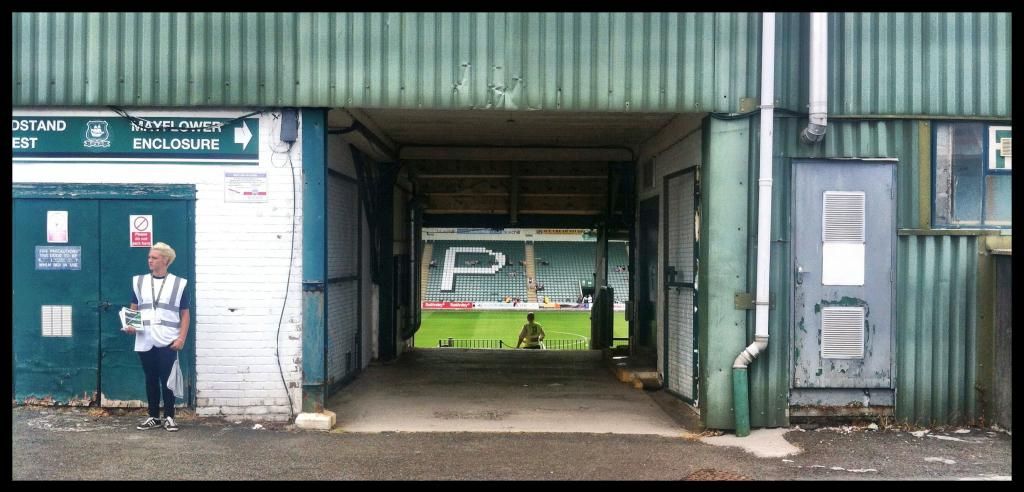
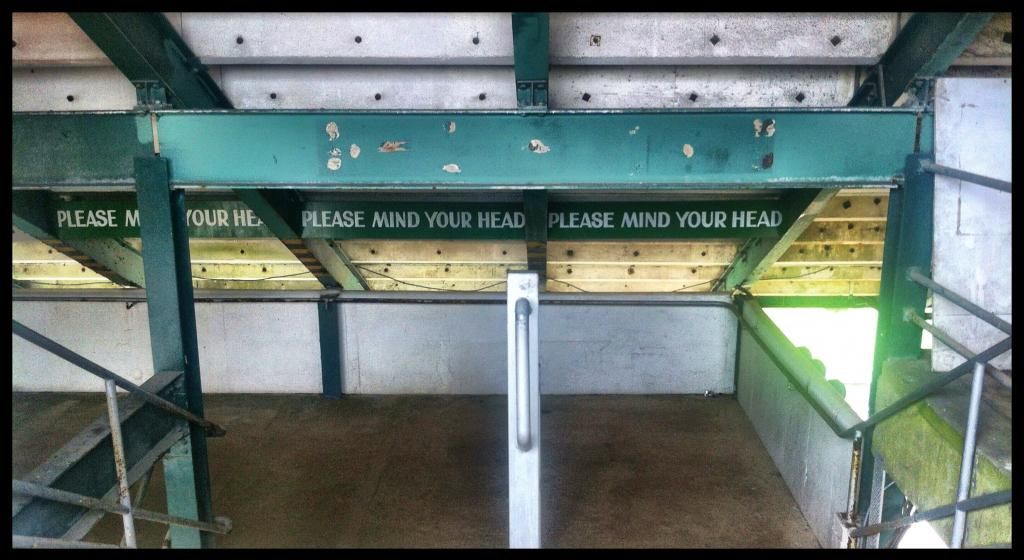


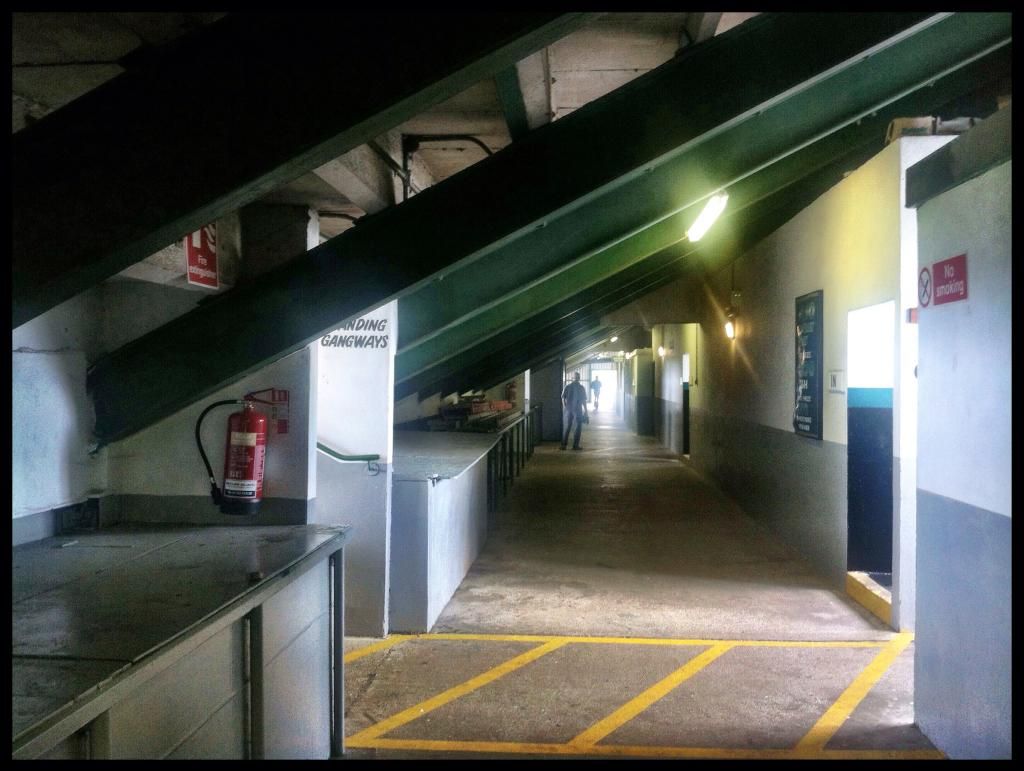
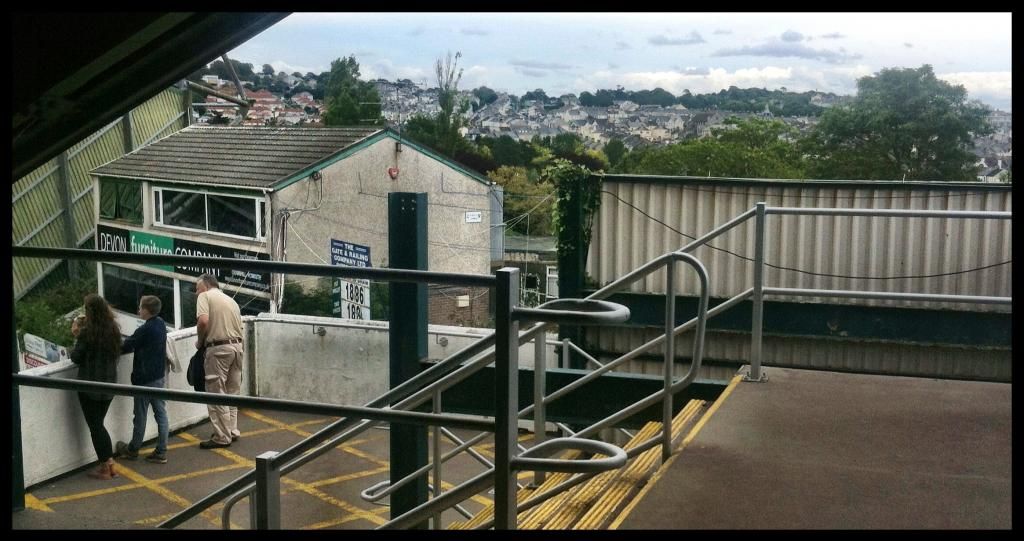
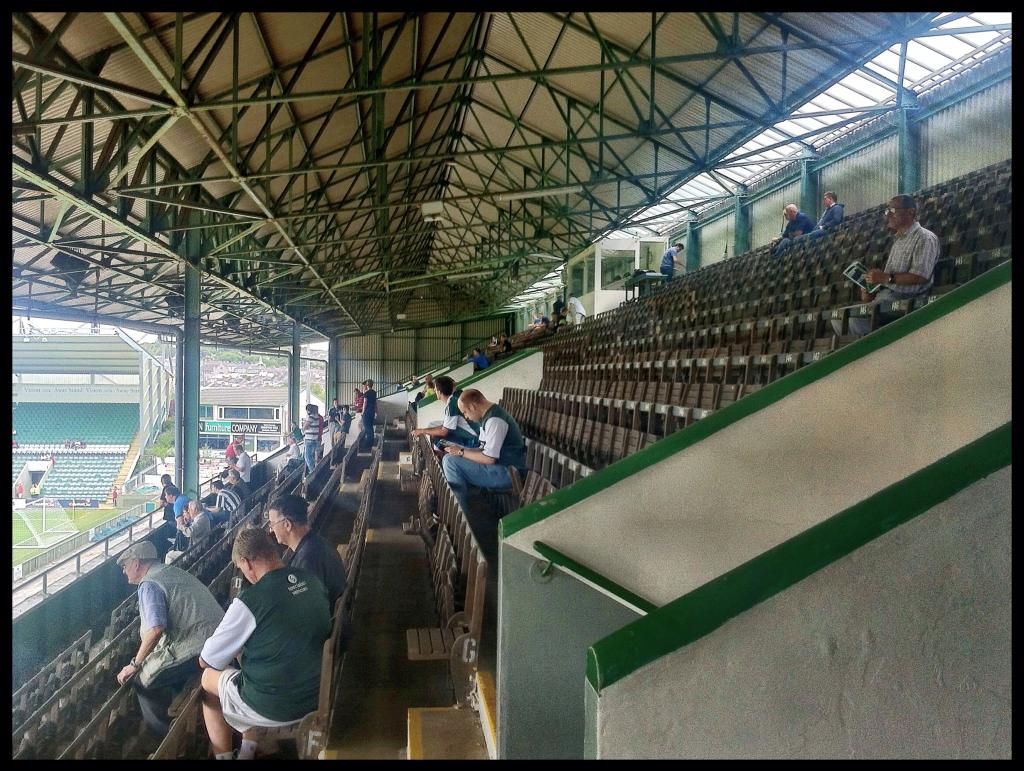
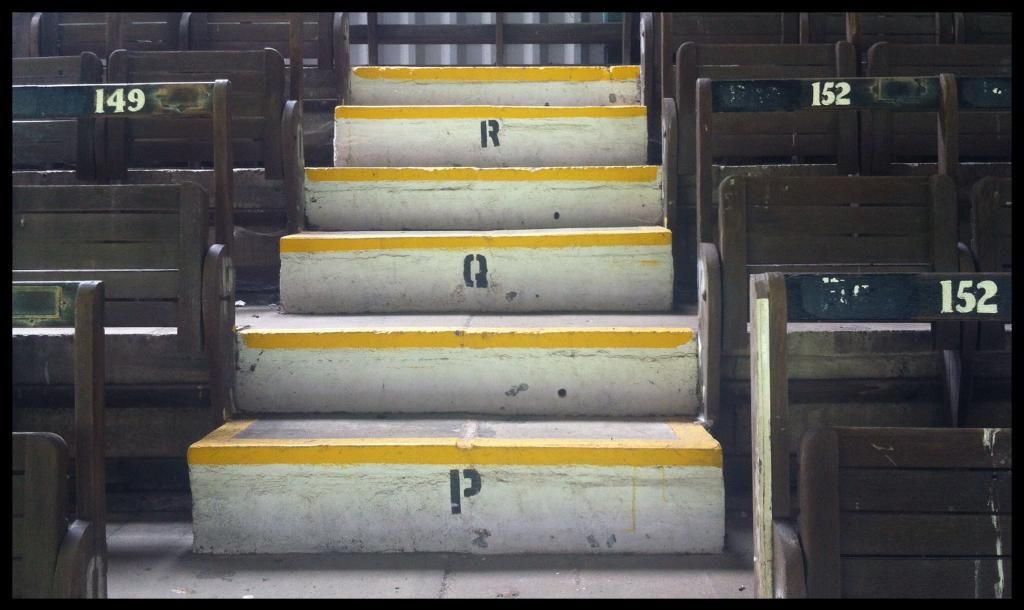
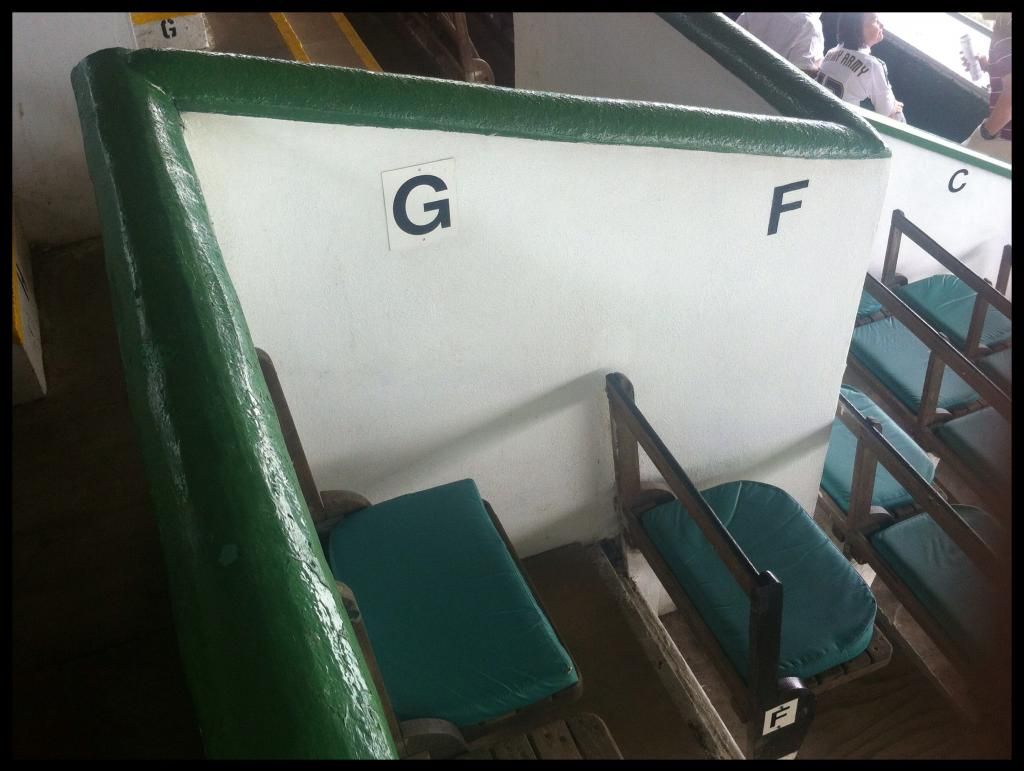

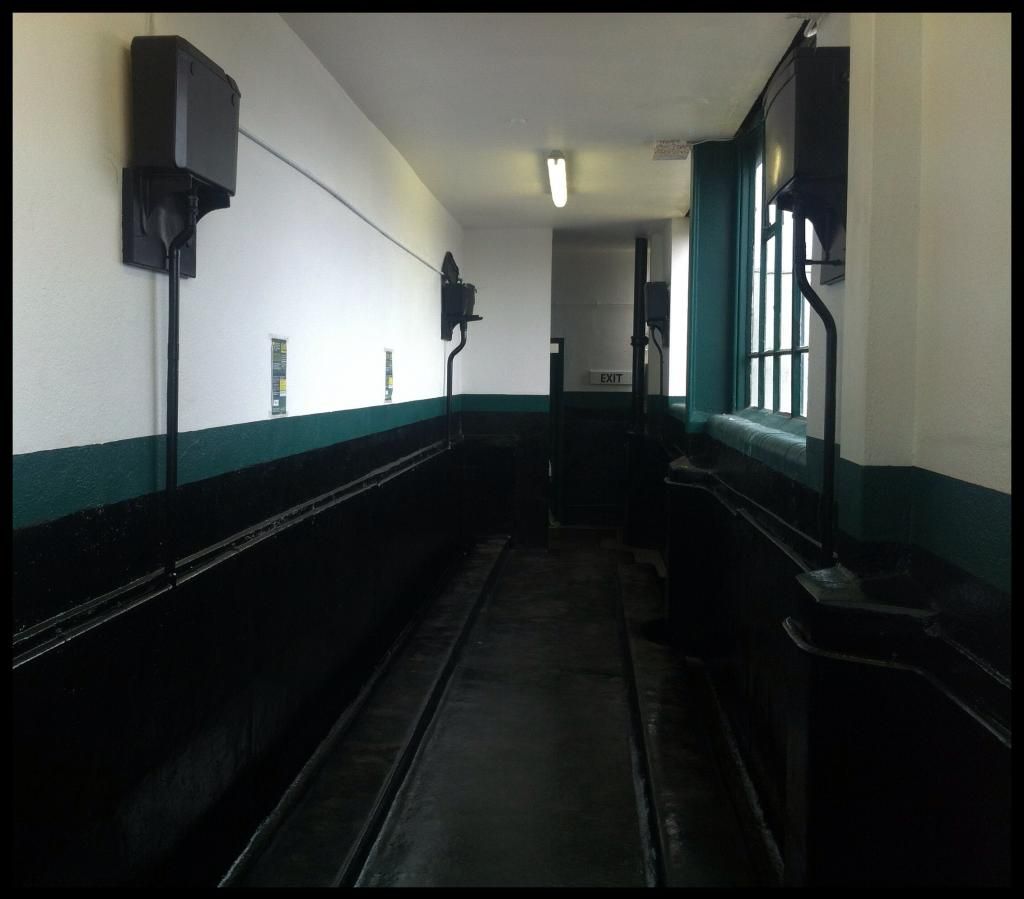
Consequently Sunday's friendly against Swansea City - the Swans basically kept the ball for ninety minutes and did as they pleased - may or may not have provided me with a final chance to sit in the Mayflower Stand.
It was 1968 when I first watched a game from the Mayflower - we beat them as it happens - and I guess it was pretty much in its pomp back then. I'd already been to football in London, Liverpool and Bristol so it wasn't quite the largest football structure I'd witnessed. I was also entering into territory that I regarded as the "Heart of Darkness". But even I knew that the "big stand at Argyle", as everybody at school who'd seen it called it, was as big and as grand as it got our side of Bristol. Forty-five years later you'd have to conclude that it's probably the most significant piece of sporting architecture to be ever built in these parts.
The Mayflower dates from 1952 and replaces the previous grandstand at Home Park which was bombed during the Second World War. Simon Inglis in his Football Grounds of Britain writes that the "double-decker format and finish appeared to be a carbon copy of a pre-war Archibald Leitch design of the mid-1930s. It was certainly the last of this type ever built".
I like the Mayflower, because, as Inglis almost gets round to implying, it's a proper football stand. The type that boys in the 1960s may have placed next to their Subbuteo pitches. It's now well-worn and seriously frayed around the edges but, whatever replaces it, is unlikely to be nearly as enjoyable. Nor can the new structure ever hope to match that special feel of grandeur. Faded or otherwise.














